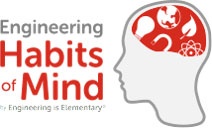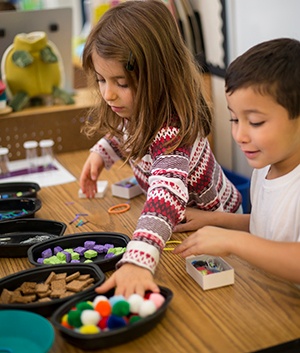 We’ve told you about EiE’s engineering habits of mind—positive strategies for problem solving that help define success not only in engineering but also across the curriculum. At EiE, we believe that a well-designed engineering curriculum can help students develop as many as 16 unique engineering habits of mind. Investigating the properties and uses of materials is a habit of mind that is an essential foundation to engineering education—it allows students to make informed decisions as they plan, create, and improve their technologies.
We’ve told you about EiE’s engineering habits of mind—positive strategies for problem solving that help define success not only in engineering but also across the curriculum. At EiE, we believe that a well-designed engineering curriculum can help students develop as many as 16 unique engineering habits of mind. Investigating the properties and uses of materials is a habit of mind that is an essential foundation to engineering education—it allows students to make informed decisions as they plan, create, and improve their technologies.
Quality Assurance
Students get a detailed look at materials properties in our unit A Work in Process: Improving a Play Dough Process. In the unit’s design challenge, students must create high quality play dough by deciding how much flour, salt, and water should be mixed and in what order. To do this, they explore what properties make a play dough “high quality”—qualities like texture and moldability are taken into consideration—and develop quality assurance tests by which to measure the properties of their dough. But first, they explore the properties of their flour, salt, and water to help them make decisions about their own mixtures. Check out the video below to see kindergarteners engaged in materials investigations.
You Really are Using a Lot of Properties Words!
In the unit A Slick Solution: Cleaning an Oil Spill, materials properties are once again at the forefront as students engineer a process to clean up an oil spill. In order to make a successful design, students must first explore how absorbent the given materials are. Later in the unit, they refer back to their recorded data when they are designing their oil-cleaning processes. In the video below, you’ll see students comparing the thickness of different materials and offering hypotheses as to why some materials absorb better than others. “Boy,” their teacher exclaims, “you really are using a lot of properties words!”
Make Some Noise
 As we begin to develop and pilot test engineering curricula for students in preschool and kindergarten programs, we have emphasized the importance of materials exploration for these tactile learners. In our noisemaker activity pilot test, PreK learners got truly hands-on with materials as they learned how simple properties like size and texture affected how loud a noisemaker can be—as well as how properties like color, shape, and shininess did not affect how loud a noisemaker can be. Their exploration may not be as nuanced as the absorbency tests in Oil Spills, but we could see how they were developing this habit of mind in their investigations. From the youngest engineer to the oldest, it’s undeniable that investigating materials properties is a critical building block of successful engineering.
As we begin to develop and pilot test engineering curricula for students in preschool and kindergarten programs, we have emphasized the importance of materials exploration for these tactile learners. In our noisemaker activity pilot test, PreK learners got truly hands-on with materials as they learned how simple properties like size and texture affected how loud a noisemaker can be—as well as how properties like color, shape, and shininess did not affect how loud a noisemaker can be. Their exploration may not be as nuanced as the absorbency tests in Oil Spills, but we could see how they were developing this habit of mind in their investigations. From the youngest engineer to the oldest, it’s undeniable that investigating materials properties is a critical building block of successful engineering.
Engineering is Elementary is a project of the National Center for Technological Literacy® at the Museum of Science, Boston.








